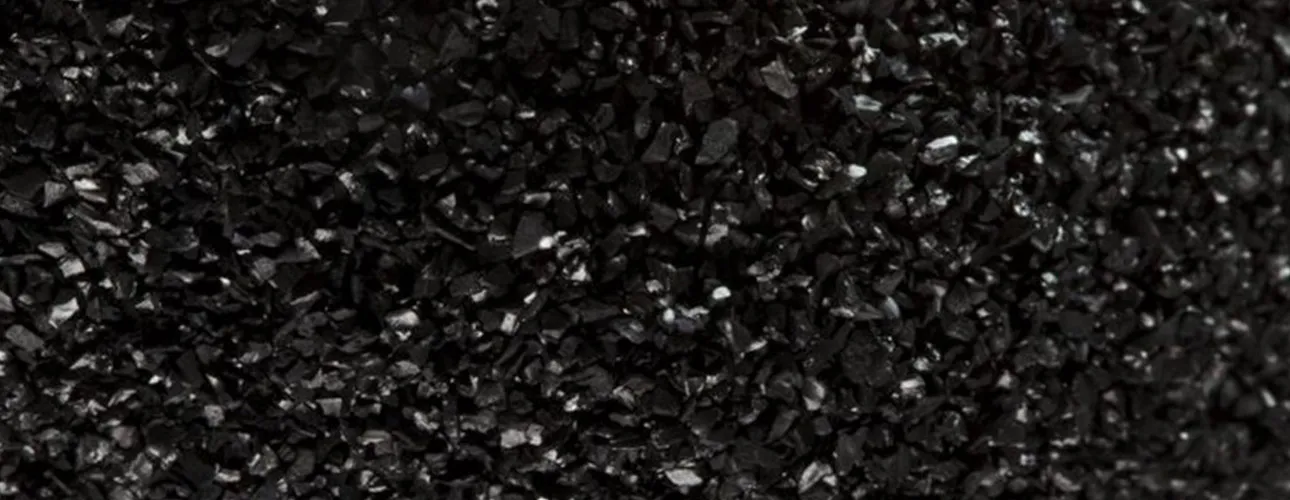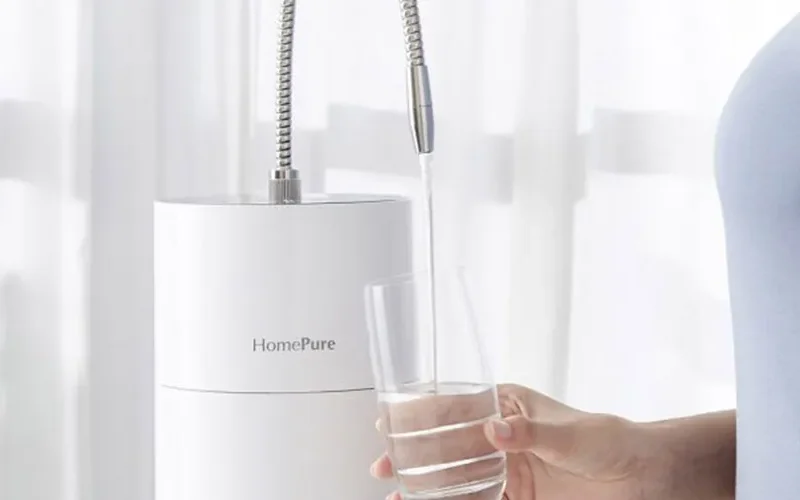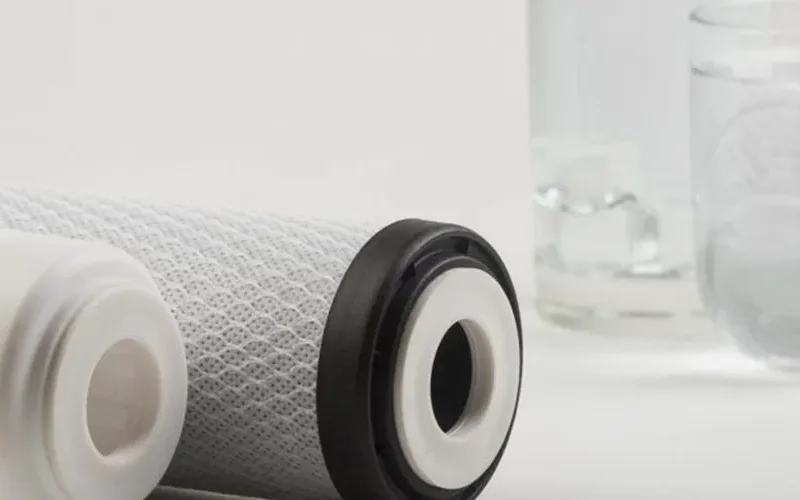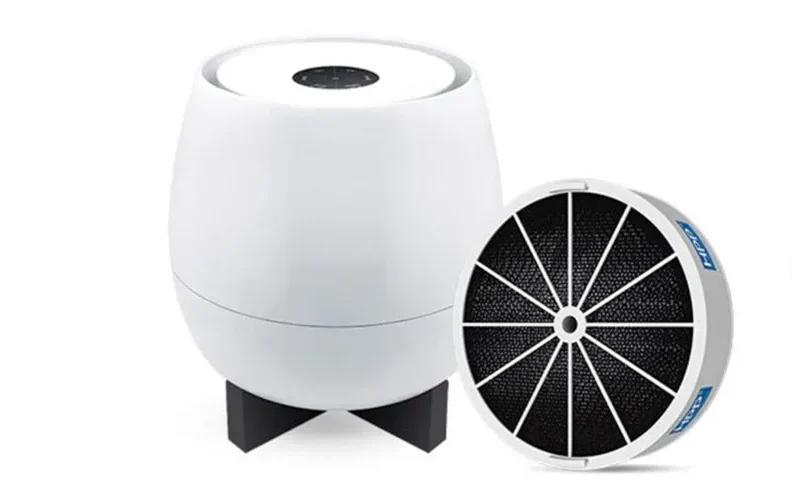How does activated charcoal work?
Activated carbon (also known as activated charcoal) consists of small, black beads or a solid black porous sponge. It is used in water filters such as the HomePure Nova or air purifiers such as the HomePure Zayn . It is also used in medicines that selectively remove toxins and chemical cleaning processes.
Activated carbon is carbon that has been treated with oxygen. The treatment creates highly porous carbon. These tiny holes give the carbon a surface area of 300-2,000 m2/g, allowing liquids or gases to penetrate the carbon and interact with the exposed carbon.
Activated carbon adsorbs a wide range of contaminants and pollutants, including chlorine, odors and pigments. Other substances, such as sodium, fluoride and nitrates, are not as strongly attracted to the carbon and are therefore not filtered out. Since adsorption works by chemically binding the contaminants to the carbon, the active sites in the carbon are eventually filled. Activated carbon filters lose their effectiveness with use and need to be refilled or replaced.
What activated carbon can and cannot filter.
The most common everyday use of activated charcoal is to filter water. Activated carbon improves water clarity, reduces unpleasant odors and removes chlorine. Activated carbon is not effective for removing certain toxic organic compounds or significant amounts of metals. Despite persistent urban legend, activated carbon adsorbs alcohol only weakly and is not an effective agent for its removal.
Activated carbon filters:
– Chlorine
– Chloramine
– Tannins
– Phenol
– Some drugs
– Hydrogen sulfide and some other volatile compounds that cause odors
– Small amounts of metals such as iron, mercury and copper
Activated carbon does not filter:
– Ammonia
– Nitrates
– Nitrites
– Fluorides
– Sodium and most other cations
– Significant amounts of heavy metals, iron or copper
– Significant amounts of hydrocarbons or Petroleum distillates
High-performance filters such as the HomePure Nova therefore use additional filter stages to filter bacteria, viruses, germs or other pollutants from the drinking water, for example.
What is activated carbon?
Activated carbon is produced by a chemical treatment that increases the porous properties of non-activated carbon many times over. This increases the adsorption level of the initial coal. As a result, particles with a diameter of approx. 0.1 mm have a surface area of several square centimeters.
Incidentally, adsorption refers to the accumulation or adhesion of substances from liquids on the inner surface of the carbon pores. It differs from absorption in the sense that the filtered substances do not penetrate into the carbon material itself, but adhere to the porous surface inside.
Effectiveness of activated charcoal
Several factors influence the effectiveness of activated carbon. The pore size and distribution varies depending on the source of the carbon and the manufacturing process. Large organic molecules are better absorbed than smaller ones. Adsorption tends to increase as pH and temperature decrease. Contaminants are also removed more effectively when they are in contact with the activated carbon for longer, so the flow rate through the activated carbon affects filtration. For these reasons, it is particularly important when purchasing a water filter to ensure that only high-quality activated carbon is used in the filter.
Deadsorption of activated carbon
A common concern is that activated carbon no longer absorbs when the pores are full. While the impurities from a full filter are not released back into the water, spent activated carbon is not effective for further filtration. In addition, some compounds found in certain types of activated carbon can leach into the water. For example, some types of activated carbon used in aquariums can begin to release phosphates into the water over time. It is therefore particularly important in this context to only use filters with high-quality activated carbon to filter drinking water.
Reuse of activated carbon
Whether you can or should reuse activated carbon depends on its purpose. It is possible to extend the life of an activated carbon filter by cutting or abrading the outer surface to expose the inside. This can expose the part that has not yet completely lost its ability to filter media. The activated carbon beads can also be heated to 200 C for 30 minutes. This breaks down the organic substances in the activated carbon, which can then be rinsed away. However, this does not remove any heavy metals. Cleaning an activated charcoal filter with water is also not effective, as water can neither dissolve nor bind most pollutants. We strongly advise against cleaning with standard household cleaning agents, as these can break down or even damage the activated carbon.
For this reason, it is generally best to simply replace an activated carbon filter. You cannot always heat the soft material that has been coated with activated carbon because it could melt or release toxic chemicals itself. This will contaminate the liquid you are trying to purify. The bottom line here is that you may be able to extend the life of activated carbon for an aquarium, but it is not advisable to reuse a filter that is used for drinking water.







